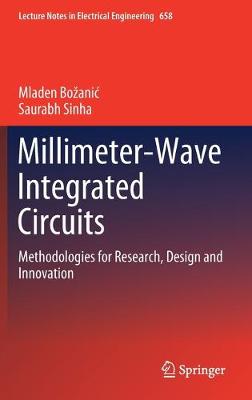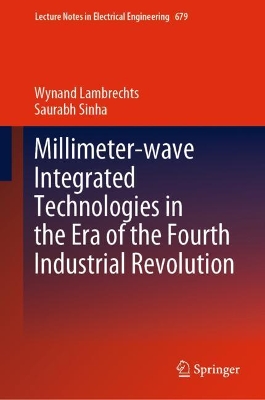Lecture Notes in Electrical Engineering
3 primary works
Book 658
This peer-reviewed book explores the methodologies that are used for effective research, design and innovation in the vast field of millimeter-wave circuits, and describes how these have to be modified to fit the uniqueness of high-frequency nanoelectronics design. Each chapter focuses on a specific research challenge related to either small form factors or higher operating frequencies. The book first examines nanodevice scaling and the emerging electronic design automation tools that can be used in millimeter-wave research, as well as the singular challenges of combining deep-submicron and millimeter-wave design. It also demonstrates the importance of considering, in the millimeter-wave context, system-level design leading to differing packaging options. Further, it presents integrated circuit design methodologies for all major transceiver blocks typically employed at millimeter-wave frequencies, as these methodologies are normally fundamentally different from the traditional design methodologies used in analogue and lower-frequency electronics. Lastly, the book discusses the methodologies of millimeter-wave research and design for extreme or harsh environments, rebooting electronics, the additional opportunities for terahertz research, and the main differences between the approaches taken in millimeter-wave research and terahertz research.
Book 679
Millimeter-wave Integrated Technologies in the Era of the Fourth Industrial Revolution
by Wynand Lambrechts and Saurabh Sinha
This peer-reviewed book explores the technologies driving broadband internet connectivity in the fourth industrial revolution (Industry 4.0). It particularly focuses on potential solutions to introduce these technologies in emerging markets and rural areas, regions that typically form part of the digital divide and often have under-developed telecommunications infrastructures, a lack of skilled workers, and geographical restrictions that limit broadband connectivity. Research shows that ubiquitous internet access boosts socio-economic growth through innovations in science and technology, with the common goal of bringing positive change to the lives of individuals. Fifth-generation (5G) networks based on millimeter-wave (mm-wave) frequency information transfer have the potential to provide future-proof, affordable and sustainable broadband connectivity in areas where previous-generation mobile networks were unable to do so. This book discusses the principles of various technologies that enable electronic circuits to operate at mm-wave frequencies. It examines the importance of identifying, describing, and analyzing technology from a purely technological standpoint, but also acknowledges and investigates the challenges and limitations of introducing such technologies in emerging markets. Presenting recent research, the book spearheads participation in Industry 4.0 in these areas.
Book 751
Mobile Communication Networks: 5G and a Vision of 6G
by Mladen Bozanic and Saurabh Sinha
This book contributes to the body of scholarly knowledge by exploring the main ideas of wireless networks of past, present, and future, trends in the field of networking, the capabilities of 5G and technologies that are potential enablers of 6G, potential 6G applications and requirements, as well as unique challenges and opportunities that 6G research is going to offer over the next decade. It covers research topics such as communication via millimeter-waves, terahertz waves and visible light to enable faster speeds, as well as research into achieving other basic requirements of 6G networks. These include low end-to-end latency, high energy efficiency, coverage that is ubiquitous and always-on, integration of terrestrial wireless with non-terrestrial networks, network management that is made more effective by connected intelligence with machine learning capabilities, as well as support for the evolution of old service classes and support for new ones.


